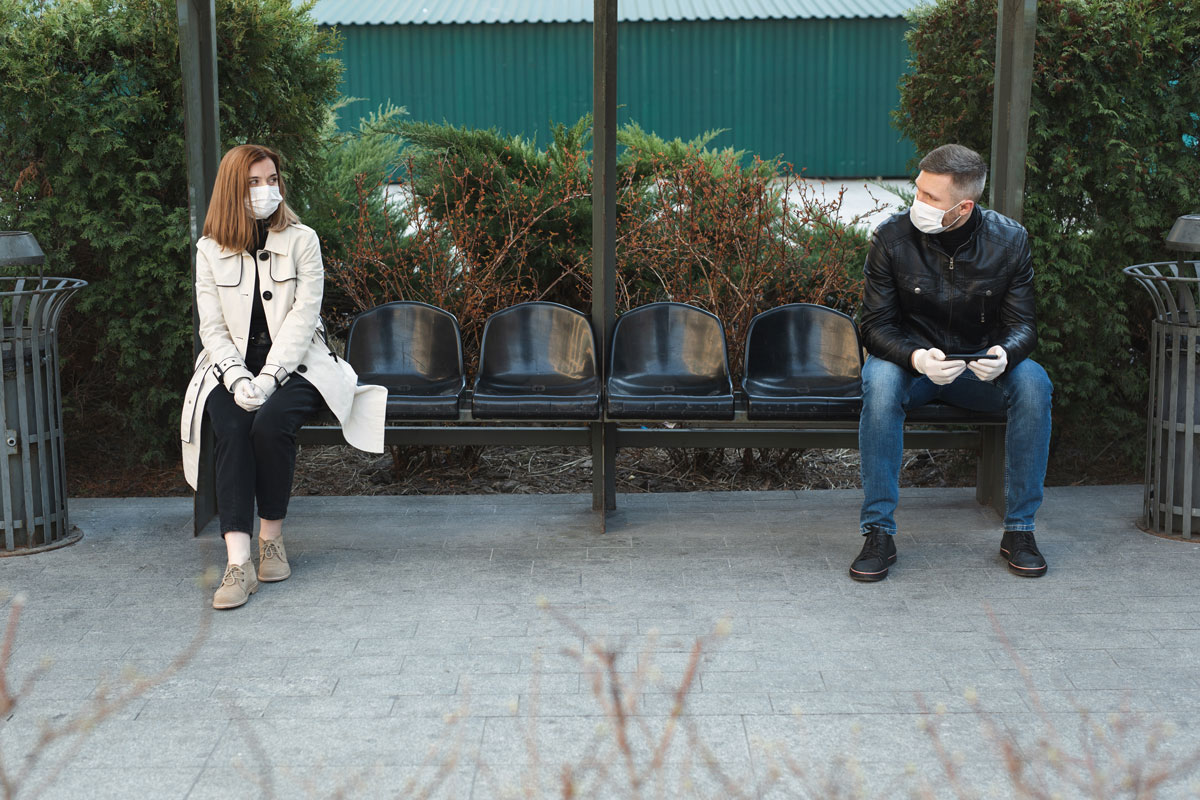There have been a lot of key decision points since the onset of the COVID-19 pandemic, but in the United States, perhaps the biggest one is looming right now.
Specifically: With unemployment now at a higher rate than it was during the Great Depression, should governors reopen states for business and risk waves of new infections? Or continue with a policy of self-isolation until there is a vaccine and a treatment — neither of which seem imminent? Many states are already in limited reopening mode — but recent polls show that most Americans who are back at work fear that they could infect their families, and that a majority also now thinks that a full-scale return should be delayed until later in the summer.
“We’re facing very tough questions in our nation’s history, dependent on complex analytics of human behavior,” says James D. Westaby, Professor of Psychology and Education at Teachers College, Columbia University. “When should stay-at-home orders be rescinded, and for whom, to help re-start a struggling economy? What behaviors need to be focused on to keep workers and the public safe? Hand washing? Social distancing? Disinfecting? Not touching the face? Mask wearing?”

To tackle some of these complexities, starting today, Westaby and his team in TC’s Dynamic Network Lab have just released a new tool that may help the nation better understand how to walk a middle line. The tool, the COVID-19 Safety Calculator, helps individuals assess the degree to which their own behaviors may be putting them at risk and provides personalized feedback to help them identify the behaviors they need to change. This tool is available for public use at no charge.
[Access the COVID-19 Safety Calculator at www.safetycalculator.org. or find it by Googling “Dynamic Network Lab”. The tool is free and open to all adults. Users’ anonymous responses will also be analyzed for research purposes and may be used to help inform future emergency prevention guidelines to help fight COVID-19.]
The Safety Calculator asks users to answer a brief set of questions about how frequently, during the preceding two weeks, they have followed the preventive measures recommended by the U.S. Centers for Disease Control and Prevention (CDC). Questions include: Are you staying at home as much as possible? How much are you avoiding touching your face, mouth and eyes? Are you regularly disinfecting computer keyboards, phones, doorknobs, faucets and toilets? How often are you washing your hands for at least 20 seconds — and are you using hand sanitizers when soap and water aren’t available? Compliance is graded on a three-point scale.
We’re facing very tough questions in our nation’s history, dependent on complex analytics of human behavior. When should stay-at-home orders be rescinded, and for whom, to help re-start a struggling economy? What behaviors need to be focused on to keep workers and the public safe?
— James D. Westaby
Once those questions are answered, the Safety Calculator immediately generates a safety score (with 100 representing total compliance) and a personalized set of recommendations for the users on how to possibly improve their personal safety behaviors. Then the tool asks additional questions to determine whether the user currently has any COVID-19 symptoms (again, all answers are anonymous) and to explore, based on scientifically-validated theories developed in the Dynamic Network Lab, the user’s motivations in complying (or not complying) with specific recommended behaviors.
In early tests with over one thousand participants, Westaby reports some striking, although preliminary findings.
The first is that the vast majority of users are reporting behaviors that do not meet CDC recommendations. For example, a high proportion of individuals indicate that they have touched their eyes, nose, and mouth with unwashed hands over the last two weeks. The touching eyes item also had a significant relation to COVID-19.

OUT AND ABOUT When should the nation resume normal activities? Data from the Safety Calculator could help provide answers. (Photo: iStock)
The second preliminary finding is that the Lab’s CDC-based safety behavior scale “significantly predicted self-reported COVID-19 symptomatology beyond several common control variables” — in other words, users with lower compliance scores are likelier to report having higher COVID-19 symptoms. This result “appears to provide some of the first preliminary scientific evidence that the 18-item set of CDC-based safety behaviors has a significant inverse relationship with reported COVID-19 symptoms,” Westaby says.
Preliminary findings also point to the importance of forgetfulness as a key obstacle to CDC compliance. Westaby says that “this suggests that much more attention needs to be paid to educating people on strategies or tricks to remember the safe behaviors. For example, placing a colorful band on a person’s hand or finger to remind the person not to touch the face.”
The Safety Calculator’s envisioned initial benefit is to help individuals reduce their risky behaviors by providing clear feedback. But Westaby believes that the Safety Calculator holds potentially even greater value for helping both the nation as a whole, and specific states, or business communities, set more effective emergency prevention guidelines to help fight COVID-19, based on the underlying behavioral dynamics.
“We’re behavioral scientists — we focus on decision-making, motivation and changing human behavior in complex networks,” he says of his team. “And that’s what fighting COVID-19 depends on until we have a vaccine or a strong treatment. With a high volume of data coming in, we hope our findings will help to further identify the specific behaviors most strongly associated with COVID-19 reduction and use those findings to help better inform health officials, organizations, and business communities in their efforts to prevent further spread in the public and among workers returning to their jobs.”
We hope our findings will help to further identify the specific behaviors most strongly associated with COVID-19 reduction and use those findings to help better inform health officials, organizations, and business communities in their efforts to prevent further spread in the public and among workers returning to their jobs.
— James D. Westaby
With the question of reopening for business hanging over the nation, Westaby is already working with large professional organizations, such as the Society for Human Resource Management, in efforts to use the Safety Calculator. The tool has much potential for businesses as well, he says, given that it asks workers what supports — ranging from better social distancing at work to better protective equipment — would help them better adjust to their job in relation to the COVID-19 pandemic Such information will be key for organizations to better understand their employees’ needs as well as help keep them safe and out of harm’s way.
“Many people who return to work won’t be able to practice six-foot social distancing, and some may not have immediate access to all desired safety equipment, such as an N95 masks,” he says. “So, following the CDC guidelines may be an important defense at work as well. After all, it may take just one infectious person to create a catastrophic spread in a densely packed organizational space — and when it’s, say, a meat packing company, that can become national news. And if people don’t feel safe returning to work, it can cause other issues, such as when employees decide to strike to protest unsafe working condition. The bottom line is that personal safety can often times be the same as worker safety.”
— Joe Levine
Government officials or authorized organizational representatives can learn more about getting involved with the Safety Calculator by contacting the Lab at https://www.tc.columbia.edu/dnl/for-gov-officials/
